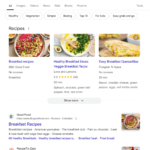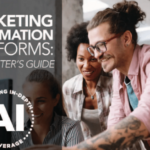As CMOs, we’re constantly trying to balance driving growth with the fact that marketing is often seen as a cost center. But what if we could change the narrative? What if marketing were viewed as a revenue driver instead of a budget drain? One of the most effective ways to shift this perception is by using customer experience.
Below, I’ll share strategic insights on how customer experience can transform your marketing department into a profit center. While we won’t be diving into a step-by-step guide, you’ll learn proven, back-to-basics strategies to position CX as the foundation of your growth strategy. These approaches help you turn every customer interaction into an opportunity to drive revenue.
Why customer experience is a key driver of revenue
Think about the last time you had an outstanding experience with a brand. Maybe it was a seamless checkout, lightning-fast delivery or a perfectly handled customer service query. Whatever it was, that positive interaction probably influenced your decision to go back to the brand — or even recommend it to someone else. Imagine the same effect across hundreds, even thousands, of customers.
CX isn’t just about making customers happy. It’s about building lasting relationships that result in repeat business and customer loyalty. Focusing on CX drives key revenue metrics like customer lifetime value (CLV) and referral rates. Companies excelling in customer experience consistently outperform those that don’t. The data speaks for itself.
The opportunity is clear: When we craft personalized, seamless experiences, we’re directly contributing to the company’s bottom line. But this transformation requires a shift in how we think about marketing’s role.
Dig deeper: The new blueprint for customer experience: Always on, always listening
Strategies to turn CX into a revenue engine
Sometimes, in our race to find the next innovative marketing tactic, we forget that the basics still work. Sticking to fundamentals and keeping it simple often yields the best results. Here are some practical, back-to-basics strategies to get you started.
personalization-at-scale">Personalization at scale
Companies that excel at personalization generate 40% more revenue from those activities than average players, McKinsey research found. Think about it: A simple personalized email or a page tailored to customers’ preferences can make them feel uniquely valued. When customers feel valued, engagement and conversions go up. Using data smartly to tailor each experience lets us build stronger, more meaningful customer connections, translating into revenue.
While many companies understand the importance of personalization in improving customer experience, most struggle to implement it. Budget constraints, insufficient data analysis capabilities and internal organizational barriers often stand in the way.
The gap between the desire to personalize and the ability to execute effectively is still significant. This leaves many businesses falling short of fully using the power of personalization to drive customer loyalty and revenue growth.
Scaling personalization isn’t a quick win or magic potion. Delivering individualized experiences to millions of customers requires investment in technology and the skilled teams to manage it. Personalization is a long-term strategy. It requires the right infrastructure, patience and resources to see results.
Customer journey optimization
We’ve all been there, dealing with a clunky checkout process or disjointed website navigation. Those are the exact moments when customers abandon the journey and walk away. Our job is to identify and eliminate these friction points by mapping the customer journey and smoothing out the rough spots.
Optimizing the journey means creating an experience that keeps customers coming back again and again. AI and automation help streamline these touchpoints, but persistent effort is required to continuously fine-tune the experience. Reducing churn and increasing revenue comes when we make every interaction seamless, without friction.
Dig deeper: Why relying on AI won’t improve the customer experience
Measuring the right metrics
Traditional marketing metrics like impressions and clicks are helpful but don’t tell the full story. If we want to understand what drives loyalty and long-term revenue, we need to dig deeper. For example:
- Net promoter score (NPS) tell us how likely a customer is to recommend our brand, a clear signal of loyalty.
- Customer lifetime value (CLV) gives us insight into a customer’s worth over the long haul.
- Customer effort score (CES) helps us measure how easy or hard it is for customers to get what they need. The easier the experience, the more likely they’ll develop loyalty and stick around.
Cross-functional collaboration
Here’s the ground truth: Marketing can’t do it alone. We need the entire organization’s support to deliver remarkable customer experiences that drive revenue. This means working closely with sales, customer service, product teams and every other department that impacts the customer journey.
Breaking down silos is tough, but it’s necessary if we want everyone rowing in the same direction toward kicking CX up to notches unknown. One way to lead this charge is by forming cross-functional teams dedicated to CX initiatives. When marketing takes the lead in driving collaboration, we create a culture where everyone feels responsible for delivering on the company’s promises to its customers.
Dig deeper: 5 secrets to cross-functional collaboration in marketing
Transforming marketing’s role in the organization
A successful transformation also relies on evolving the skills within your marketing team. Building expertise in areas like data analytics, customer insights and cross-functional collaboration will improve CX and help you demonstrate marketing’s impact in ways everyone — from the C-suite to other departments — will understand. When your team becomes proficient in these areas, marketing shifts from just another (cost) department to a consistent growth (profit) engine for the entire business.
Real-world examples of CX driving revenue
Look no further than Amazon, where customer convenience is king. Features like one-click ordering, personalized recommendations and almost instant delivery have helped Amazon build one of the most loyal customer bases in the world.
Then there’s Starbucks. Their mobile app doesn’t just make ordering convenient. It creates an engaging, personalized experience that drives repeat business and loyalty. These companies have turned CX into a key revenue generator, and you can do it, too.
Dig deeper: 5 simple ways to improve customer experience
Key takeaways
The difference between a marketing team seen as a cost center and one that drives revenue is the ability to create great customer experiences.
By making customer experience the foundation of your strategy to transform marketing from a cost center into a profit center, you position marketing as a true revenue engine.
This transformation won’t happen overnight. It requires a fundamental shift in how marketing operates — focusing on developing new skills, adopting advanced technologies and fostering collaboration across every department that touches the customer journey.
Marketing evolves beyond traditional boundaries when we see every customer interaction as an opportunity to deepen engagement and build lasting loyalty. It becomes the engine of sustained growth and a central driver of business success.
Dig deeper: How to un-silo your organization and be more customer-centric
The post How CX transforms marketing from cost center to revenue engine appeared first on MarTech.








